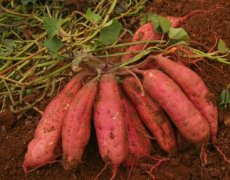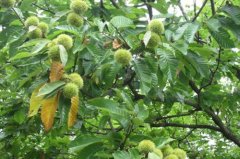What is purple potato made of? How to plant purple potatoes and when to harvest them
Purple potatoes, also known as Peruvian purple potatoes, have natural purple or dark blue skin and flesh, and are unusually high in antioxidants, which makes them very healthy. Their unique colors come from natural anthocyanin pigments; some Peruvian potatoes are naturally purple, while others breed for darker tones.
They come in different shapes, textures and sizes; some of them are small or fish species, while others can be harvested, either as small new potatoes or growing into large baked sizes. There are many changes between varieties, and purple potatoes can taste similar to any other potato-its color does not produce any special taste. Some varieties lose some pigments when they are boiled, but retain color when they are fried, roasted, roasted or mashed.
Purple potato varieties
Purple Peruvians are all purple and produce well at the end of the season. Purple Carnival is a mid-season specialty potato that retains its color when cooking. Purple Viking has a real purple skin, pink red spatter, snow-white meat, sweeter during storage. Purple Majesty is perhaps the strongest dark purple variety. Purple small Pelisse is a kind of fish potato, which has been modified to produce dark purple.
Because there is only a slight difference between dark blue and purple tones, many of the best purple potatoes have blue names. The most common of these are Adirondack blue, large and oval, dark blue skin and purplish meat. Unlike some others, it keeps its color when it boils.
All blue potatoes, also known as Russian Blue, Blue Mark, Congo and several other names, are heritage potatoes with dark purple features and purple meat and white stripes. The midnight moon has almost purple skin and moist golden flesh.
Grow purple potatoes
Like other potatoes, the purple strain is a primitive South American strain that usually thrives in harsh conditions and is usually resistant to disease. Potatoes need seven or eight hours of sunlight, well-drained moist soil, and good fertility. Multi-purpose fertilizers are used when planting, and more when the plant is about half the length. Growing potatoes in cool weather is not in danger of freezing, but when the temperature stays below the mid-1980s, it reduces tuber formation.
Find "seed" potatoes online, but order them in advance when the supply continues. Before planting, cut the seed potatoes into small pieces, each with one or two small "eyes" or leaf buds. Plant in rows, mountains, raised beds or containers about 3 inches deep and 1 foot away.
Potato tubers sprout from short stolons on the lower stems of leafy plants, but must be kept in complete darkness to avoid greening in the sun, or poisonous plant alkaloids called solanin. Prevent this by accumulating soil or thick mulch around the seedlings and repeat as needed until six or eight inches of lower stems are buried.
Harvest potatoes
Small or "new" purple potatoes can be harvested about three months after planting, but for larger mature tubers, wait until the plants turn yellow, or cut off the mature plants about 4 months after planting and dig up the tubers. Dig gently to avoid cuts and scratches; don't wash, just brush off the soil.
Store mature tubers in cool, dry, dark places for up to four or five months and check regularly for wilting and decay.
- Prev

How about mechanized sweet potato harvesting? Mechanized sweet potato harvesting, vine removal, simple and efficient excavation
Traditional sweet potato harvesting is labor-intensive, and imported sweet potato harvesting machines have many shortcomings. Taoyuan Agricultural Improvement Station has developed a "vine removal and harvesting machine." The machine is smaller, less than half the price, and faster than manual harvesting.
- Next

When is the history of chestnut planting? How to plant chestnut trees and how to nurse and feed the soil?
Chestnut trees have been growing starch nuts for thousands of years since at least 2000 BC. In the past, nuts have been an important source of human food, used to make substitutes for flour and potatoes. At present, nine species have been planted in temperate regions around the world.
Related
- A course of planting techniques and methods on how to grow carrots
- How to plant the latest tulips?
- Is it better to pick tea in the morning or in the afternoon? When is the best time for tea to be picked? what is the third or fifth tea?
- Launch Yuanxiao Happy combination Haocha + Tea Yuan healthy Taste
- Penghu Tourism "Fireworks 20 Parade with You"
- 2022 West Lake Happiness holds "Digital Revitalization Voucher" and draws iphone13 and laptop.
- Banqiao Fuzhou social houses are designed to change start-up combined with police elimination to create a safe and livable environment
- The convenient measure of "mechanical weeding" in Xinbei has been abused and the Agriculture Bureau has imposed heavy penalties on the illegal land consolidation.
- Changgeng University Joins Hands with Four Memory Factories to Rescue Memory Talent Shortage
- The list of Taiwan's top 100 MVP managers is listed by the Director-General of the Farmers' Association of Sanxia District.

